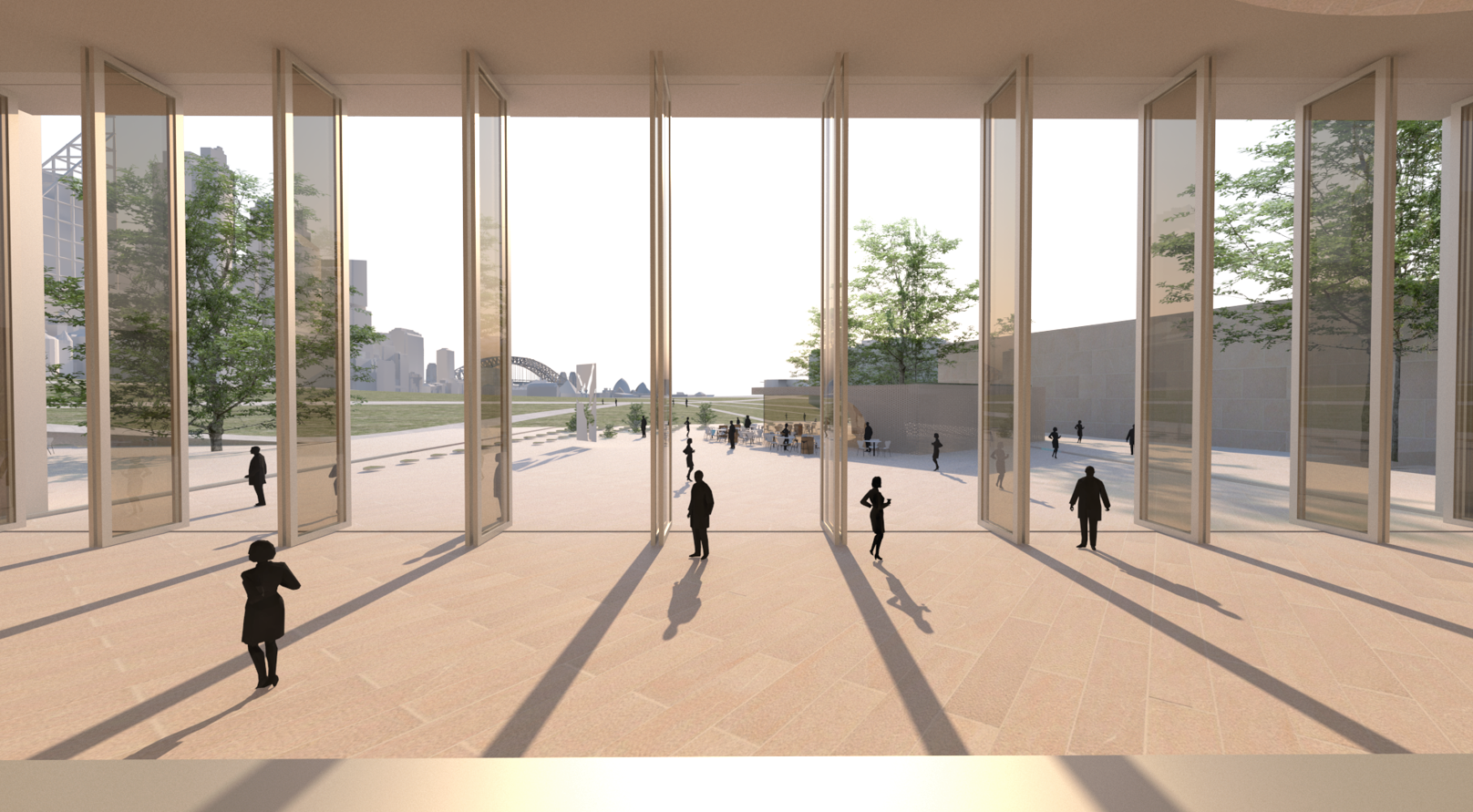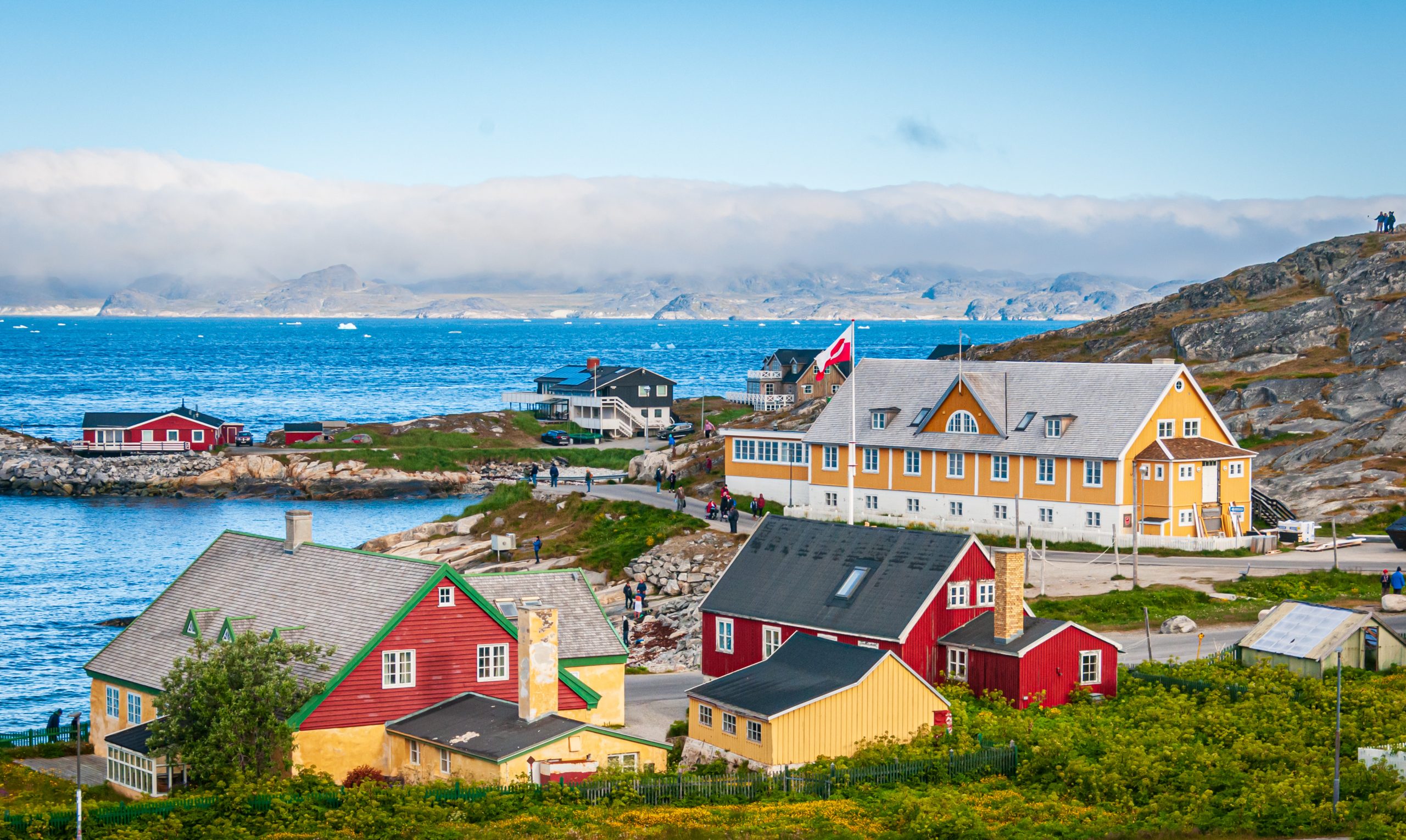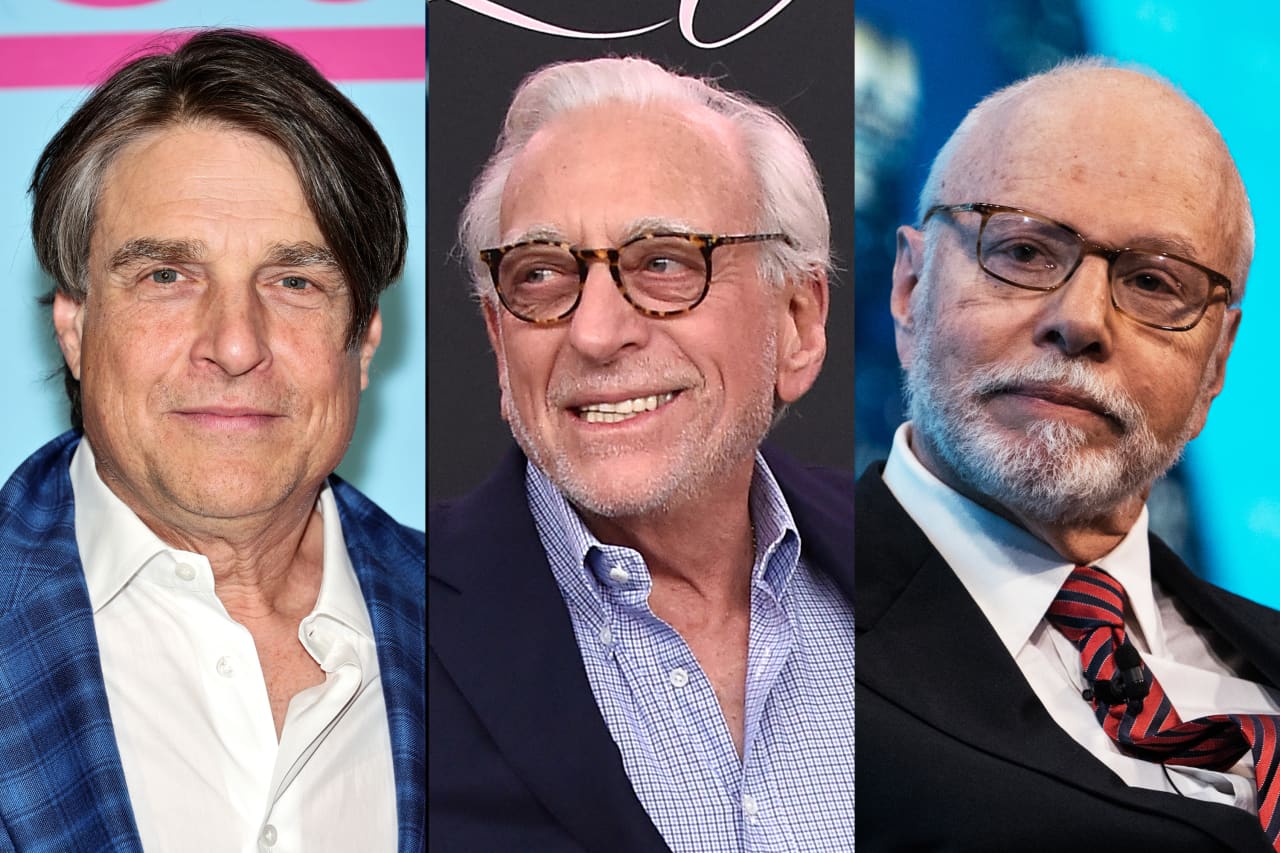Controversial proposal for Sydney’s Domain precinct prioritises cultural infrastructure
A bold plan for Sydney’s Domain carpark including four theatres has been aired but opponents question the location at the cost of valuable city greenspace.
A bold proposal to redevelop the Domain carpark into a performing arts precinct has been released, prompting a mixed response.
The plan put forward by leading architectural firm Grimshaw for four performance halls, including a 2,500 seat theatre, Indigenous cultural centre and rehearsal space would also include a revitalisation of the Woolloomooloo precinct, taking in the arterial William Street and older social housing.
Grimshaw managing partner Andrew Cortese said the scheme sought to address some of the transport incursions introduced over the past 30 years including the Eastern Distributor and Domain Tunnel through the creation of green roofs for the cultural facilities and landscaping following the natural slope of the land from the Domain down to Sir John Young Crescent.
“The second and much larger green space will be located on a land bridge to be built over the exit of the Domain Tunnel, presently on the doorstep of the new Sydney Modern gallery, covering this ugly roadway with a land bridge which can accommodate all the playing fields now residing on top of the Domain Car Park” Mr Cortese said.
Mr Cortese said while cities like Melbourne and international neighbours such Singapore, Kowloon and Shenzhen were investing in cultural infrastructure, Sydney was falling short.
However, NSW Cities Minister Rob Stokes said with city greenspace at a premium, there were concerns about development of this site, suggesting an arts precinct would be better located in Pyrmont, or placed closer to transport hubs in Western Sydney.
Mr Cortese said those sites had been considered but that the Domain precinct represented the best position in a post Covid CBD environment.
“The principal reason for the location is to reverse the trend of the City of Sydney tending to situate world-class cultural facilities facing the harbour – our traditional location for all our major cultural institutions – and actually situate them in the community of the city and in a vibrant, connected precinct,” he said.
In explaining why a location further west was not chosen, Mr Cortese said Grimshaw fully supported the creation of new cultural infrastructure in Western Sydney but until the opening of West Metro in 2030 there was very little in the way of public transport, aside from heavy rail.
Grimshaw has offices around the world, including Sydney, and is responsible for a wide range of influential public projects, with works spanning the arts, education and infrastructure in the US, China, the UK and more.
A development of this size of the Domain carpark would expect to take a couple of decades or more to come to fruition.
Grimshaw global practice lead for cities, Dr Tim Williams, said as Sydneysiders adopted a hybrid work model, the notion of CBDs being primarily about industry needed revisiting.
“We need to reimagine, revitalise and represent these precincts because with hybrid working now the norm much of their economic rationale and vibrancy has dissipated,” Dr Williams said. “Across the world we are seeing on the one hand stranded retail, office and hospitality assets but also initiatives to reinvent a city core’s attractors so as to ‘earn the commute’: that is, to give people in the suburbs special new reasons to come to town.
“The kind of culture-led renewal we propose for East Sydney – as single use CBDs transition to more mixed use ‘central experience districts’ – will be crucial to the success of this strategy and give new reasons for international visitors to come too.”
This stylish family home combines a classic palette and finishes with a flexible floorplan
Just 55 minutes from Sydney, make this your creative getaway located in the majestic Hawkesbury region.
The remote northern island wants more visitors: ‘It’s the rumbling before the herd is coming,’ one hotel manager says
As European hot spots become overcrowded , travellers are digging deeper to find those less-populated but still brag-worthy locations. Greenland, moving up the list, is bracing for its new popularity.
Aria Varasteh has been to 69 countries, including almost all of Europe. He now wants to visit more remote places and avoid spots swarmed by tourists—starting with Greenland.
“I want a taste of something different,” said the 34-year-old founder of a consulting firm serving clients in the Washington, D.C., area.
He originally planned to go to Nuuk, the island’s capital, this fall via out-of-the-way connections, given there wasn’t a nonstop flight from the U.S. But this month United Airlines announced a nonstop, four-hour flight from Newark Liberty International Airport in New Jersey to Nuuk. The route, beginning next summer, is a first for a U.S. airline, according to Greenland tourism officials.
It marks a significant milestone in the territory’s push for more international visitors. Airlines ran flights with a combined 55,000 seats to Greenland from April to August of this year, says Jens Lauridsen, chief executive officer of Greenland Airports. That figure will nearly double next year in the same period, he says, to about 105,000 seats.
The possible coming surge of travellers also presents a challenge for a vast island of 56,000 people as nearby destinations from Iceland to Spain grapple with the consequences of over tourism.
Greenlandic officials say they have watched closely and made deliberate efforts to slowly scale up their plans for visitors. An investment north of $700 million will yield three new airports, the first of which will open next month in Nuuk.
“It’s the rumbling before the herd is coming,” says Mads Mitchell, general manager of Hotel Nordbo, a 67-room property in Nuuk. The owner of his property is considering adding 50 more rooms to meet demand in the coming years.
Mitchell has recently met with travel agents from Brooklyn, N.Y., South Korea and China. He says he welcomes new tourists, but fears tourism will grow too quickly.
“Like in Barcelona, you get tired of tourists, because it’s too much and it pushes out the locals, that is my concern,” he says. “So it’s finding this balance of like showing the love for Greenland and showing the amazing possibilities, but not getting too much too fast.”
Greenland’s buildup
Greenland is an autonomous territory of Denmark more than three times the size of Texas. Tourists travel by boat or small aircraft when venturing to different regions—virtually no roads connect towns or settlements.
Greenland decided to invest in airport infrastructure in 2018 as part of an effort to expand tourism and its role in the economy, which is largely dependent on fishing and subsidies from Denmark. In the coming years, airports in Ilulissat and Qaqortoq, areas known for their scenic fjords, will open.
One narrow-body flight, like what United plans, will generate $200,000 in spending, including hotels, tours and other purchases, Lauridsen says. He calls it a “very significant economic impact.”
In 2023, foreign tourism brought a total of over $270 million to Greenland’s economy, according to Visit Greenland, the tourism and marketing arm owned by the government. Expedition cruises visit the territory, as well as adventure tours.
United will fly twice weekly to Nuuk on its 737 MAX 8, which will seat 166 passengers, starting in June .
“We look for new destinations, we look for hot destinations and destinations, most importantly, we can make money in,” Andrew Nocella , United’s chief commercial officer, said in the company’s earnings call earlier in October.
On the runway
Greenland has looked to nearby Iceland to learn from its experiences with tourism, says Air Greenland Group CEO Jacob Nitter Sørensen. Tiny Iceland still has about seven times the population of its western neighbour.
Nuuk’s new airport will become the new trans-Atlantic hub for Air Greenland, the national carrier. It flies to 14 airports and 46 heliports across the territory.
“Of course, there are discussions about avoiding mass tourism. But right now, I think there is a natural limit in terms of the receiving capacity,” Nitter says.
Air Greenland doesn’t fly nonstop from the U.S. because there isn’t currently enough space to accommodate all travellers in hotels, Nitter says. Air Greenland is building a new hotel in Ilulissat to increase capacity when the airport opens.
Nuuk has just over 550 hotel rooms, according to government documents. A tourism analysis published by Visit Greenland predicts there could be a shortage in rooms beginning in 2027. Most U.S. visitors will stay four to 10 nights, according to traveler sentiment data from Visit Greenland.
As travel picks up, visitors should expect more changes. Officials expect to pass new legislation that would further regulate tourism in time for the 2025 season. Rules on zoning would give local communities the power to limit tourism when needed, says Naaja H. Nathanielsen, minister for business, trade, raw materials, justice and gender equality.
Areas in a so-called red zone would ban tour operators. In northern Greenland, traditional hunting takes place at certain times of year and requires silence, which doesn’t work with cruise ships coming in, Nathanielsen says.
Part of the proposal would require tour operators to be locally based to ensure they pay taxes in Greenland and so that tourists receive local knowledge of the culture. Nathanielsen also plans to introduce a proposal to govern cruise tourism to ensure more travelers stay and eat locally, rather than just walk around for a few hours and grab a cup of coffee, she says.
Public sentiment has remained in favour of tourism as visitor arrivals have increased, Nathanielsen says.
—Roshan Fernandez contributed to this article.
This stylish family home combines a classic palette and finishes with a flexible floorplan
Just 55 minutes from Sydney, make this your creative getaway located in the majestic Hawkesbury region.




















